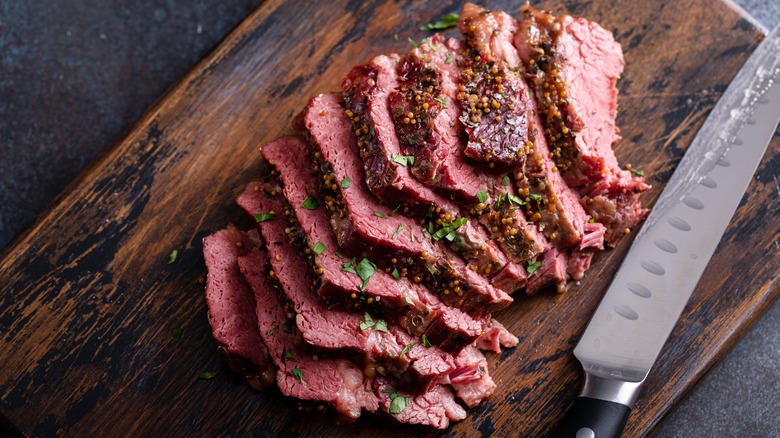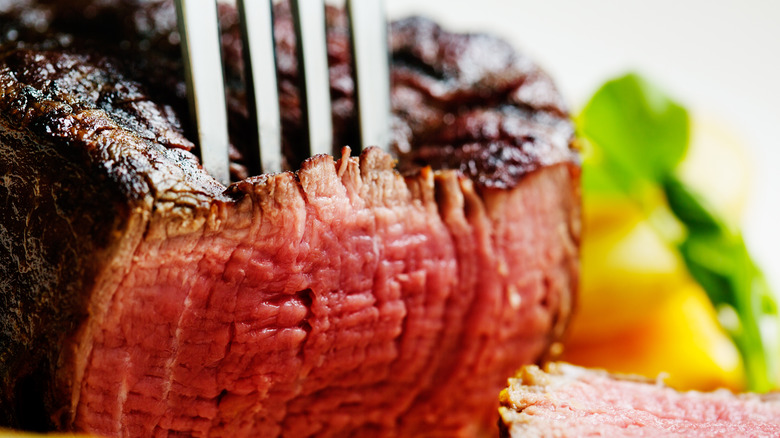What Exactly Is The Warner-Bratzler Shear Test For Meat?
When it comes to preparing meat, the universal goal is to produce a tender, succulent bite full of savory flavor. In fact, this experience is so important that it inspired the Warner-Bratzler shear test. This test evaluates meat tenderness using sophisticated equipment designed to mimic a human bite. The most tender cuts of meat require less force to shear through them, allowing us to determine which cuts need additional tenderizing when cooking.
K.F. Warner proposed the possibility of a tenderness test for meat during the 1920s, and L.J. Bratzler improved upon his ideas in 1932 when he designed the aptly-named Warner-Bratzler Meat Shear Fixture device. However, the test and device weren't widely used until the 1950s, and were standardized as recently as 1994. This standardization enabled the beef industry to breed livestock that produced the most tender meat. The Warner-Bratzler shear test is also useful for educating the general public about their food. For instance, knowing how tender or tough a cut of meat is can help us determine whether to use baking soda to tenderize meat or salt.
How the Warner-Bratzler shear test works
The Warner-Bratzler Meat Shear Fixture is a stainless steel blade with an inverted V-shaped notch in the center. It's housed within a mechanism that forces the blade through samples of cooked meat with the same pressure as a human bite. A computer linked to the fixture records the amount of force required to cut through the sample, allowing food scientists to determine how tough or tender the cut of meat is.
To ensure the most accurate reading possible, the meat is cooked prior to being tested, and a sample is taken from the center of the cut. This process closely resembles the experience of a person eating the meat. If an excessive amount of force is needed to cut through the sample, it indicates the meat is tough. Conversely, less force indicates the meat is tender and easy to bite through.
Data collected from these tests is used to help rank cuts of meat from worst to best based on how easy it is to eat. The tenderest cuts are considered the highest quality, while chewier cuts are considered lower quality. This doesn't mean tough meat is unsafe to eat, just that a cheaper cut such as skirt steak may need some TLC — like being marinated in tangy Dijon mustard and sriracha — before you throw it on the grill.

